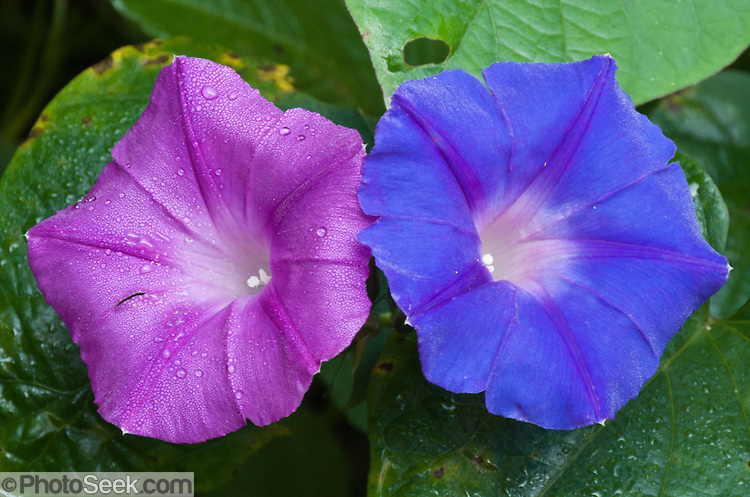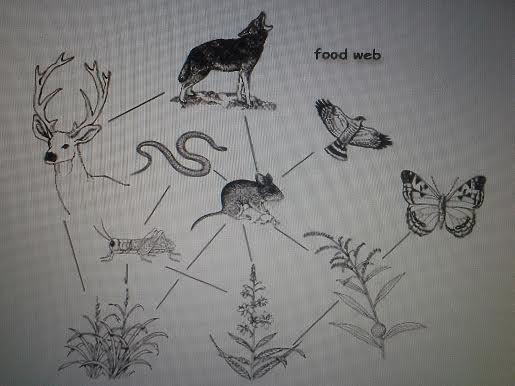Interactions
In order to survive, every organism
must be a predator and in turn, be prey to other organisms in the
food chain. The way individuals interact with one another is
extremely important and maintains the biodiversity in different
ecosystems. In the symbiosis continuum, there is mutualism,
commensialism, and parasitism. Below, you will find one example of a
mutualistic relationship and one example of a commensalistic
relationship that potentially lead to a parasitic relationship with
the Clark's Sphinx Moth and other organisms living in its same
environment.
Mutualism
Mutualism is the interaction between two
individuals where the fitness of each of these individuals is raised
because of the actions of each other (Boucher 1985). In other words,
mutualism benefits both of the organisms involved but requires each
of them to pay a “price” in return for that benefit. This type of
interaction, contrast to commensalism and parasitism, is the more
omnipresent of any two organisms. There are five groups of
mutualisms and the one that the Clark’s Sphinx Moth falls into is
the pollination mutualisms (Boucher 1985). Pollination mutualisms
are extremely crucial to nature and evolution because they involve
around 200,000 animal species and 170,000 plants (Nature Education
2014). In this mutualism, the flowers serve as the Clark’s Sphinx
Moth main food source because they contain nectar and other nutrients the moth needs in order to
survive. As the moth is visiting flowers for food, they are unknowingly
spreading the pollen onto different flowers. The moth serves as the
pollinator for the plants. Many flowers do not have the ability to
pollinate themselves so they rely on insects to do it for them.
contain nectar and other nutrients the moth needs in order to
survive. As the moth is visiting flowers for food, they are unknowingly
spreading the pollen onto different flowers. The moth serves as the
pollinator for the plants. Many flowers do not have the ability to
pollinate themselves so they rely on insects to do it for them.
Parasitism and Commensialism
Parasitism is when one species is
benefitted and the other is harmed. A parasite must live part or all
of its life in or on a host, must demonstrate adaptation to that
host, acquire resources from the host for its own benefit, and must
cause damage to the host (Campbell and Reece 2008). Parasites can
create negative effects environmentally, for themselves and their
host’s environment (Web of Science 2014). Not specifically the Clark’s
Sphinx Moth, but caterpillars and moths in general can serve as
hosts for other organisms. An example of parasitism is larval
parasitic mites that attach onto the body of hosts (Poinar et al.
1990). These mites use the moth or caterpillar’s blood as their own
food source, allowing them to live. The mites are usually shaped
like little balloons on the dorsal side of their hosts. They
normally do not affect the life of their host unless they spread
abundantly all over their bodies. If they do not affect their life,
it is a commensalistic relationship. Commensialism is when one
organism is benefitted while the other is neither benefitted or
harmed (Campbell and Reece 2008). But if the mites do affect the
life of the moth, it is parasitism and can cause
reproduction problems for the female host. Many different species of
insects share this relationship with parasitic mites, including the
Crane Fly.
Competition
Life is tough being an animal! Not only is
there competition within their species for mating, there is also competition for other species in finding food. Competition is the
interaction between two organisms where the fitness of one organism
is lowered by
 the presence of other. It occurs naturally with
organisms that live in the same environment. Clark’s Sphinx Moths
compete with other moths and insects for the most nourishing
flowers. If a competing organism over consumes a certain type of
flower, leaving it scarce, the moth will inevitably have to change
its eating habits to another type of flower in order to survive
(Lloyd et al. 2008).
the presence of other. It occurs naturally with
organisms that live in the same environment. Clark’s Sphinx Moths
compete with other moths and insects for the most nourishing
flowers. If a competing organism over consumes a certain type of
flower, leaving it scarce, the moth will inevitably have to change
its eating habits to another type of flower in order to survive
(Lloyd et al. 2008).
Just as Clarks Sphinx Moths are predators to organisms, they also
serve as prey to other organisms, like bats, frogs, lizards, toads,
and other insects like spiders (Fullard 1998). To learn more about
one specific spider predator, click on this
link.
But not only does the Clark's Sphinx Moth need to beware of spiders,
but also other dangerous predators lurking around the environment.
If interested in learning more about a specifc lizard predator,
click
here.
To find out more about cool organisms and how they interact with one
another, check out this website
multipleorganisms.net.
Everyone loves fun facts! :) To
continue this expedition you are on, go to the
fun facts page. Otherwise, go back to home.